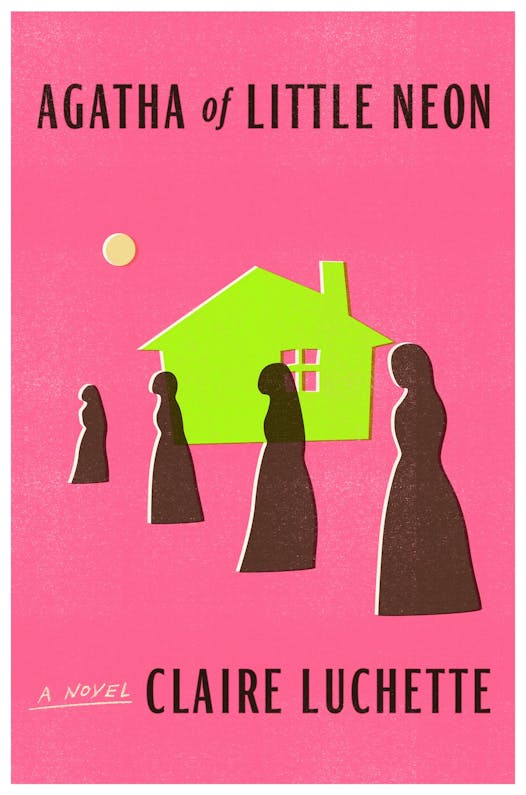Agatha, the narrator of Claire Luchette's brilliant debut, "Agatha of Little Neon," takes her vows alongside three other Catholic sisters at the age of 22, imagining that together the quartet forms a "strange, asymmetrical body: Frances was the mouth; Mary Lucille, the heart; Therese, the legs. And I, Agatha, was the eyes."
Early in the novel, Luchette hints at a divide between Agatha's youthful expectations — as a child she dreams of "glamour" and "autonomy" — and the setting in which the
novel is primarily concerned: a halfway house in Woonsocket, R.I.
There is dark humor in Luchette's work — "From Woonsocket," they write, "you could vomit into Massachusetts" — as well as insight: "When people saw our habits, they ceased to see our faces."
There is plentiful accounting of the daily labor in the halfway house, known as Little Neon (the house is "the color of Mountain Dew"). Agatha moves between a collective narration of the sisters' responsibilities and her own story: her mother's death, her general struggle to speak out loud. When she agrees to teach geometry at the local Catholic high school, she is confronted with a new scale of power. In her classroom, "I alone had the authority to switch on and off the overhead lights."
This amusing glimpse of "authority" underscores the humility with which Agatha views the world, as well as the limits placed upon her. When she reveals her given name, Isabelle, to the reader, her identity begins to stretch, to become individualized and complex.
Agatha regards each being she encounters with dignity; so, too, does Luchette. The residents of Little Neon include Lawnmower Jill, so called because she drives a lawn mower instead of a car, and Tim Gary, disfigured after an illness that led to a painkiller addiction.
Luchette develops every person so fully, so effectively, that even those who briefly cross the page are memorable. Mother Roberta has a temper. The abbess who drives the four sisters to Woonsocket gobbles ham from an envelope. Luchette's ease with drawing characters is echoed in their ability to create images that are both ordinary and miraculous: the blinking red lights on the turbines in a wind farm at night; feathers released from a down coat during mass; a massive tire, washed up on the shore of a river; doughnuts "lined up like pageant queens."
In the first home Agatha shares with her sisters, Mother Roberta's anger appears, initially, to be positioned as comic relief: Roberta spits. She breaks things. She uses the expression "son of a pup." By the time Agatha withdraws from Little Neon and her vows, she is confronting her own anger over many forms of injustice, including a fleeting, painful glance at her mother's death after giving birth.
"The world has had women for such a long time," Agatha says during confession. "I did not know how to be patient anymore." Luchette examines this impatience in stunning, haunting prose.
Jackie Thomas-Kennedy's writing has appeared in One Story, Electric Literature, Lenny Letter, Narrative, Harvard Review, the Ploughshares blog and elsewhere. She held a 2014-2016 Stegner Fellowship at Stanford University.
Agatha of Little Neon
By: Claire Luchette.
Publisher: Farrar, Straus & Giroux, 271 pages, $26.
The Eurovision Song Contest is kicking off with pop and protests as the war in Gaza casts a shadow

Latina music star Becky G will kick off 2024′s Minnesota State Fair grandstand series

Groundbreaking Minneapolis restaurant Saffron is coming back
Luis Miranda Jr. reflects on giving, the arts and his son Lin-Manuel in the new memoir 'Relentless'



